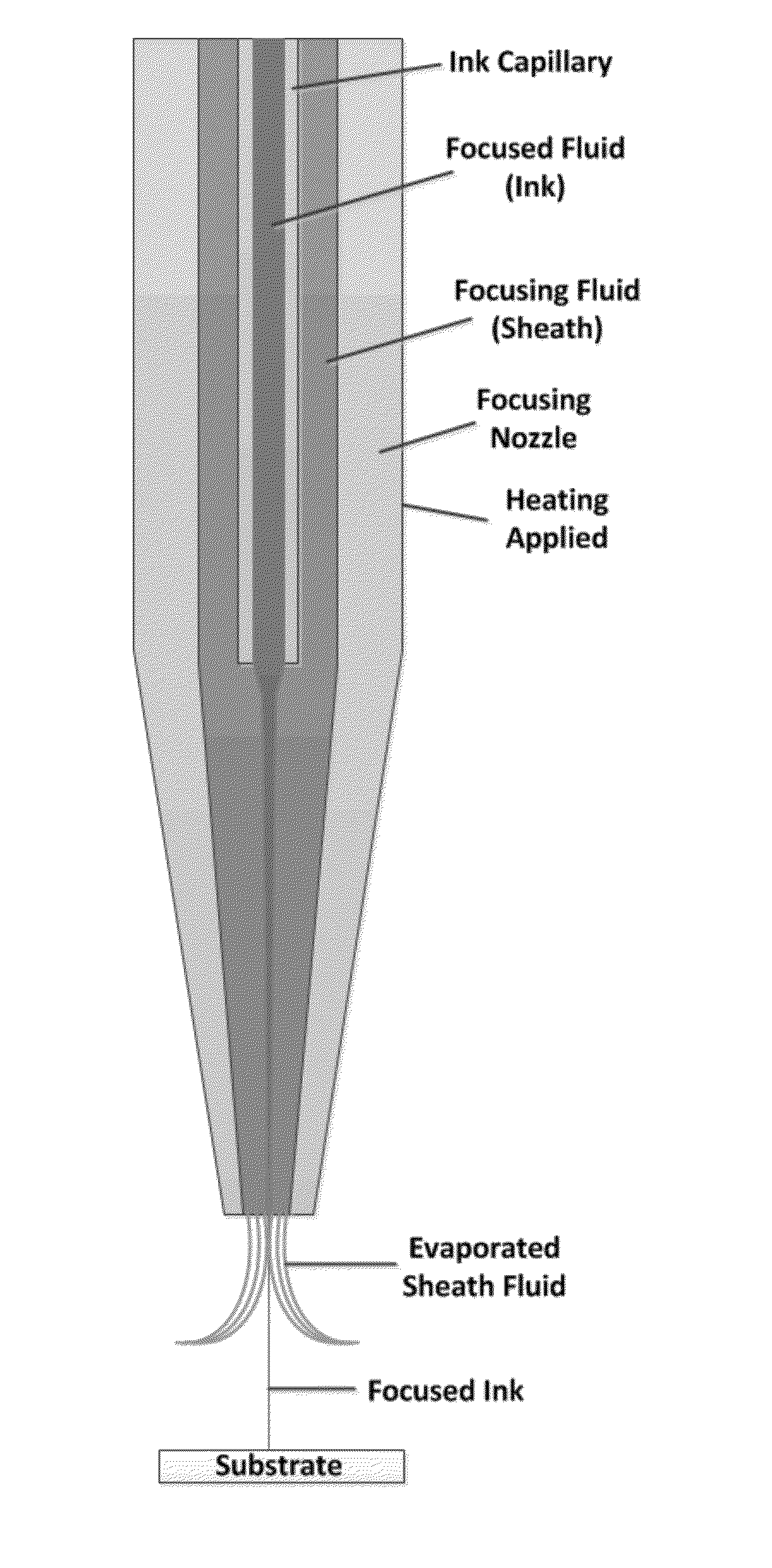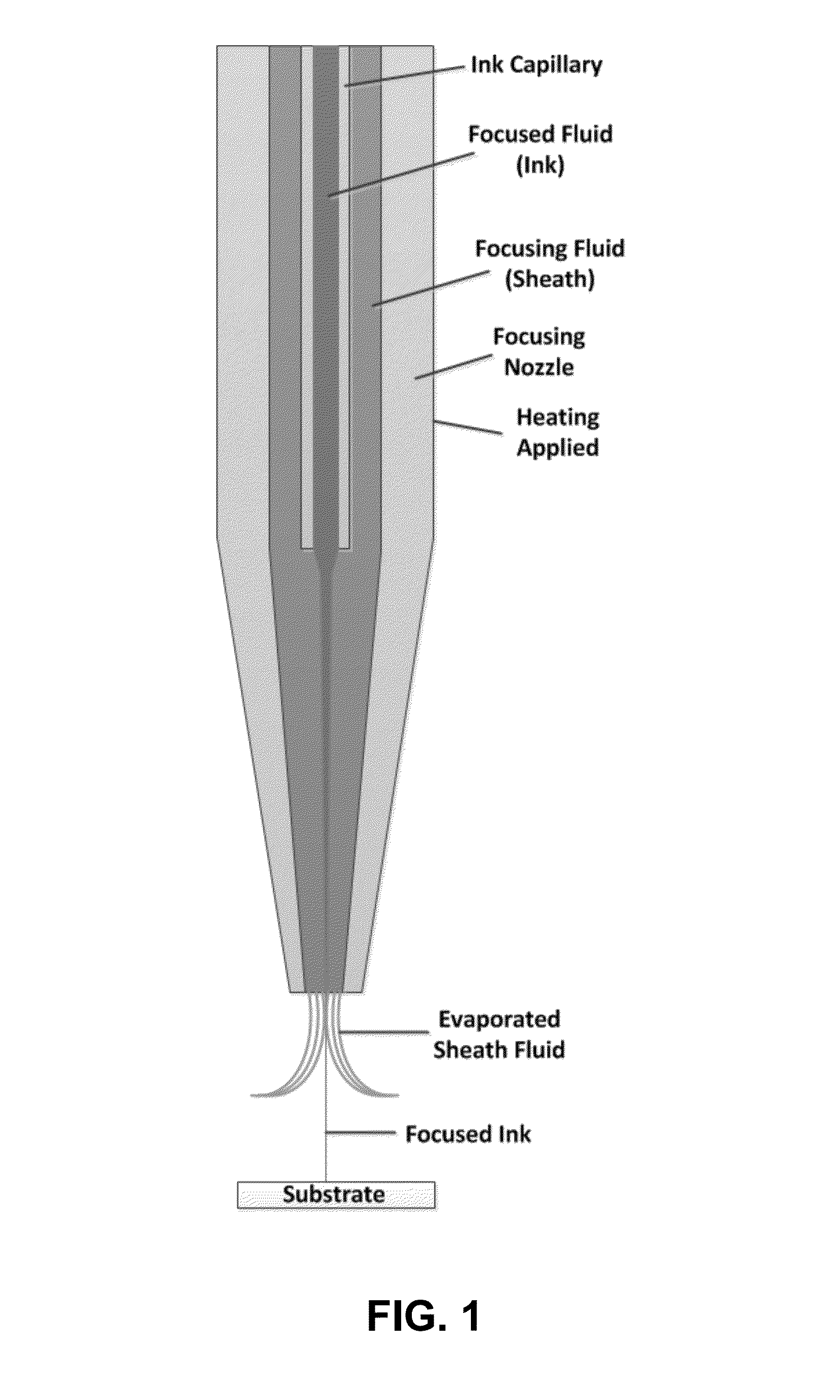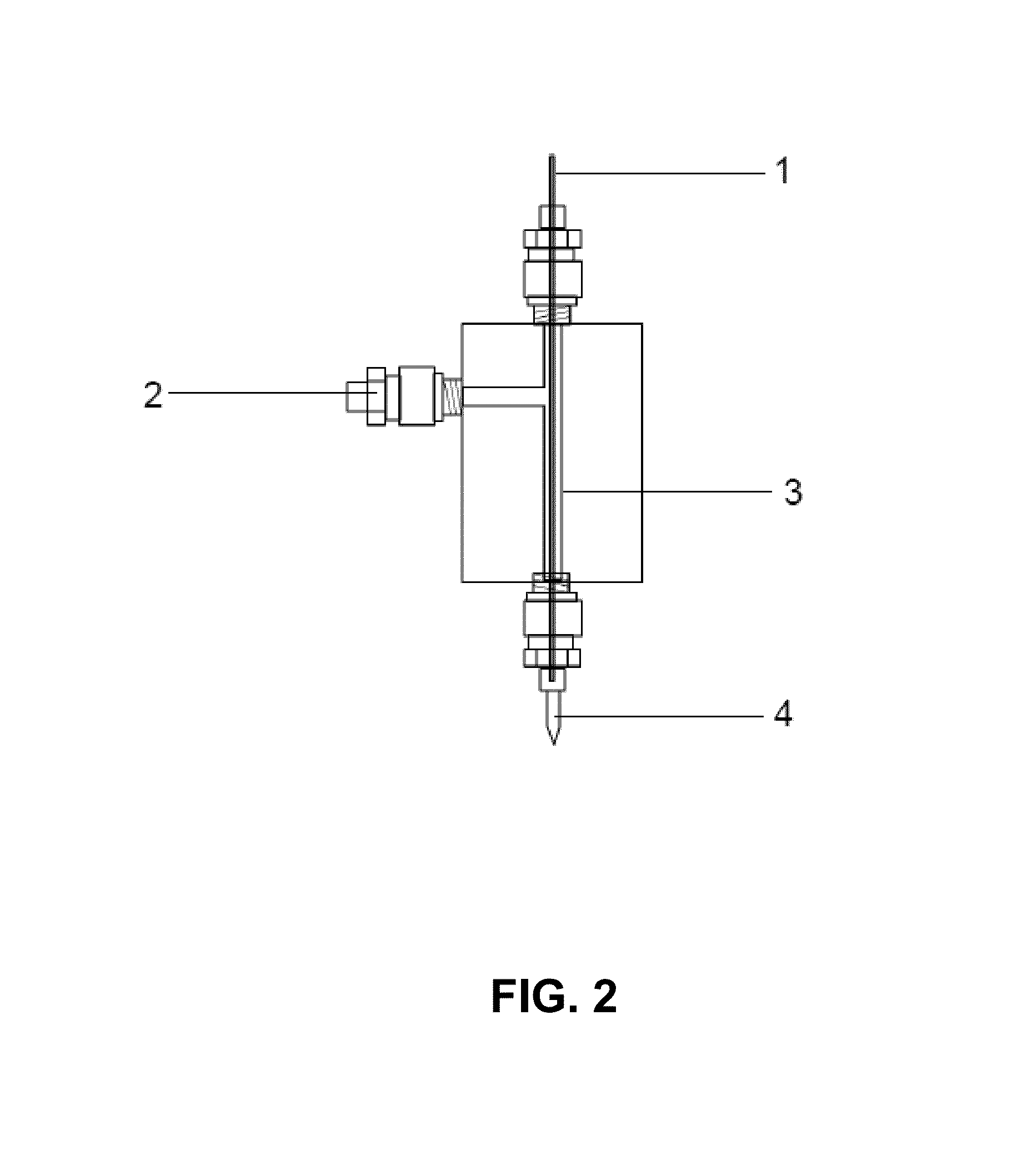Two-Fluid Hydrodynamic Printing
a hydrodynamic printing and hydrodynamic printing technology, applied in the direction of filament/thread forming, manufacturing tools, applying layer means, etc., can solve the problems of excess energy input to the ink, limiting the use of this technology for commercial applications, and limiting the usefulness of conformal printing
- Summary
- Abstract
- Description
- Claims
- Application Information
AI Technical Summary
Benefits of technology
Problems solved by technology
Method used
Image
Examples
Embodiment Construction
[0023]Many of the existing issues associated with AJ technology can be overcome with the use of a liquid jet printing method using hydrodynamic focusing. Hydrodynamic focusing of fluids occurs in microchannels when multiple fluids flow into the same channel and the flow rate of a focusing fluid is increased with respect to a focused core fluid. If the two fluids differ enough in their velocity (or density), they do not mix and form a two-layer stable flow. This effect is illustrated in FIG. 1, which shows hydrodynamic focusing in a coaxial tube assembly. Focused fluid (ink) is introduced into the coaxial tube via a central ink capillary. The focused fluid is injected at the end of the capillary into the middle of a sheath flow of a focusing fluid. Increasing the flow rate of the focusing fluid decreases the cross-sectional area of the core ink fluid causing focusing. The focusing effect can be further enhanced by flowing the two fluid streams through a converging focusing nozzle. Up...
PUM
| Property | Measurement | Unit |
|---|---|---|
| Diameter | aaaaa | aaaaa |
| Flow rate | aaaaa | aaaaa |
| Velocity | aaaaa | aaaaa |
Abstract
Description
Claims
Application Information
 Login to View More
Login to View More - R&D
- Intellectual Property
- Life Sciences
- Materials
- Tech Scout
- Unparalleled Data Quality
- Higher Quality Content
- 60% Fewer Hallucinations
Browse by: Latest US Patents, China's latest patents, Technical Efficacy Thesaurus, Application Domain, Technology Topic, Popular Technical Reports.
© 2025 PatSnap. All rights reserved.Legal|Privacy policy|Modern Slavery Act Transparency Statement|Sitemap|About US| Contact US: help@patsnap.com



